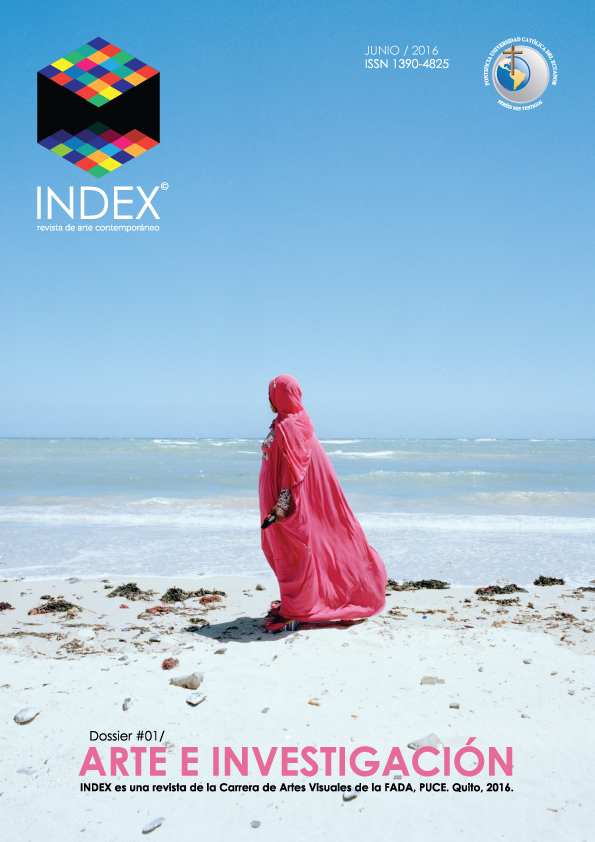THE ABSENT BODY AND IT`S PRESENCE IN TENSIONS BETWEEN LANGUAGES: TEMPORALITY IN SPACE IN THE WORK “COMUNICACIONES” BY MARGARITA PAKSA
Main Article Content
Abstract
This work study artistic languages and how its relation allows creating different realities in the installation “Comunicaciones”, made by Margarita Paksa. With a creative act of perception, this artist uses evidence and the game of opposites to set up a time-space installation, which in the end, is a non-finished process. There are three main moments in Margarita Paksa’s work: production, exhibition, and perception. These moments develop the problem of, how the temporality makes procedures. Paksa’s work discusses artistic manifestations in the 60’s, in Argentina, where people used art to approach other fields in order to connect. Paksa exposes virtuality and the probability of its reality. The artist shows presence using absence, she shows one absent body using both: visual language and sounds.
Paksa exposes something virtual and its possibility of becoming real. The artist shows us something present using the absence, she shows us one absent body using both: visual language and sounds.
Keywords: body, aesthetic experience, conceptualism, installation, languages.
Downloads
Article Details
Index, revista de arte contemporáneo maneja sus derechos bajo licencia Creative Commons Reconocimiento-NoComercial 4.0. En ese sentido los envíos quedan sujetos a la decisión del autor.
References
Levy, P. (1999). Qué es lo Virtual?, Buenos Aires: Paidos "“ Ibérica.
Paksa, M. (1997). Comunicaciones. En M. Paksa, Proyectos sobre el discurso de mi (p. 74-80), Buenos Aires: Fundación Espigas.
Rosenbaum, A. (2011). Lo que se oculta detrás de un nombre: cruce de lenguajes y apropiaciones disciplinares, En G. Marotta (Dirección), IV Simposio en Lenguajes Artísticos Combinados, Posgrado en Lenguajes Artísticos Combinados, Buenos Aires, Departamento de Artes Visuales,IUNA.
Páginas en Línea
Cuadra, Á. (2007). La obra de arte en la época de su hiperreproductibilidad digital. Recuperado del Archivo del Observatorio para la CiberSociedad en http://www.cibersociedad.net/archivo/articulo. php?art=227 [Consulta: 9 de Octubre de 2015].
Groys, B. (2009). La topología del arte contemporáneo, Antinomies of Art and Culture. Modernity, Postmodernity,Contemporaneity, Duke University Press, (p. 71-80). Recuperado de www.rojas.uba.ar/lipac/biblioteca/groys.pdf [Consulta: 2de Octubre de 2015].
Valesini, S. (2012). La instalación como dispositivo expositivo y comunicacional. El caso Misión/ Misiones (cómo construir catedrales) de Cildo Meireles en la I Bienal del MERCOSUR. Recuperado del Repositorio Institucional
de la UNLP en http://sedici.unlp.edu.ar/ handle/10915/40999 [Consulta: 2 de Octubre de 2015]
Videos
Paksa, M. Sobre el discurso de mi. Obras 1964-1994. Disponible en https://www.youtube.com/watch?v=jOsOhjOmPgU [Consulta: 2 de Octubre de 2015].
Paksa, M. (Junio, 2008). Entrevista. Disponible en https://www.youtube.com/ watch?v=PwOwu_6H9-I [Consulta: 2 de Octubre de 2015]

